100G is at its full wing to transit into the mainstream. There are four most common types of 100G QSFP28 optical transceivers for data center applications at present, i.e. QSFP28 SR4, QSFP28 LR4, QSFP28 PSM4, and QSFP28 CWDM4. Comparisons between the latter three will be discussed in this passage to help you select your 100G application mode properly.

1. Overview of 100G QSFP28 CWDM4 Optical Transceiver
The requirements for data transmission rates are getting higher and higher, and the 100G QSFP28 optical transceiver market is expanding rapidly. The IEEE organization has developed two optical transceiver standards for 100G networks: 100G QSFP28 SR4 and 100G QSFP28 LR4. But in practice, due to the variety of fiber link lengths, these two standards cannot deploy data centers in the most cost-effective manner. Therefore, the CWDM4 MSA organization has developed the 100G QSFP28 CWDM4 standard with a transmission distance of 2 km.
100G QSFP28 CWDM4 is a standard published by the CWDM4 MSA organization in 2014. It is a 100G transmission mode based on single-mode coarse wavelength division multiplexing (CWDM) technology. The 100G QSFP28 CWDM4 optical transceiver that conforms to this standard adopts a duplex LC interface. The 4 central wavelengths of 1271nm, 1291nm, 1311nm, and 1331nm are used for optical signal transmission (as shown in the table below), and each band transmits 25G.
Through CWDM technology, the 100G QSFP28 CWDM4 optical transceiver can multiplex the above four center wavelengths onto a single-mode fiber for transmission. It should be noted that in order to ensure the stability of the optical fiber transmission system, the 100G QSFP28 CWDM4 optical transceiver must be used for the optical fiber link with the forward error correction (FEC) function.
| Wavelength Lane | Central Wavelength | Wavelength Range | |
|---|---|---|---|
| Lane1 | 1271 nm | 1264.5 to 1277.5 nm | Tx0, Rx0 |
| Lane2 | 1291 nm | 1284.5 to 1297.5 nm | Tx1, Rx1 |
| Lane3 | 1311 nm | 1304.5 to 1317.5 nm | Tx2, Rx2 |
| Lane4 | 1331 nm | 1324.5 to 1337.5 nm | Tx3, Rx3 |
The Application of 100G QSFP28 CWDM4 :
100G QSFP28 CWDM4 can be applied to the data center 100G CWDM4 Ethernet, InfiniBand EDR high-performance computing and storage network.
100G QSFP28 CWDM4 Form Factor:
The optical transceiver 100G CWDM4 uses the QSFP28 form factor, which is an optical transceiver that can be used to support 100G transmission. It provides an ideal solution for the current demand for increasing transmission rates in ultra-large data centers. The form factor size of QSFP28 is smaller than that of the CFP4 optical transceivers, which means QSFP28 optical transceivers have a higher port density on the switch.
The Digital Diagnostic Monitoring (DDM) Function of 100G QSFP28 CWDM4:
The 100G QSFP28 CWDM4 optical transceiver has a built-in DDM function, which can effectively monitor the important performance parameters of the optical transceiver such as transmitted optical power, received optical power, temperature, and power supply voltage, laser bias current, and warning information.
The Cost of 100G QSFP28 CWDM4:
The 100G QSFP28 CWDM4 optical transceiver can be directly upgraded from 25G to 100G without going through 40G, which greatly reduces the cost of the wiring system.
Features of 100G QSFP28 CWDM4:
Take FiberMall’s 100G QSFP28 CWDM4 optical transceiver (QSFP28-100G-IR4) as an example:
- 1Gb/s, each lane bit rate 25.78 Gb/s
- Up to 2km transmission on single-mode fiber (SMF) with FEC
- LAN WDM DFB laser and PINreceiver
- I2C interface with integrated Digital Diagnostic monitoring
- QSFP28 MSA package with duplex LC connector
- Single +3.3V power supply
- 4 CWDM lanes MUX/DEMUX design
- 100G CWDM4 MSA Technical Spec Rev1.1
- Maximum power consumption 3.5W
- Operating case temperature: 0 to +70°C
- Complies with EU Directive 2011/65/EU (RoHS 6/6)
Application:
- Data Center Interconnect
- 100G Ethernet
- Infiniband QDR and DDR interconnect
- Enterprise networking
What are the Advantages of 100G CWDM4 QSFP28 Compared to Other 100G Optical Transceivers?
100G QSFP28 CWDM4 optical transceivers, in data center applications, have more price advantages than 100G QSFP28 PSM4 optical transceivers in medium and long-distance transmission; compared with 100G QSFP28 LR4 optical transceivers, with a wider application field, so the demand will also be larger; the price advantage is outstanding compared to 100G QSFP28 LR4 optical transceivers.
With the continuous growth of data traffic, the trend of large-scale and flat data centers promotes the development of optical transceivers in two aspects: the upgrade of transmission rate requirements and the increase in quantity requirements. For a large number of optical transceivers used in data centers, low cost and transmission distance are undoubtedly the focus of consideration. Therefore, CWDM4 has become the mainstream of 100G cloud computing data centers.
2. Overview of 100G QSFP28 LR4 Optical Transceiver
A long time ago, the optical transceiver industry chain was very chaotic. Each manufacturer had its own package structure with various interfaces and different sizes. In order to solve this problem, the multi-source agreement (MSA) came into being. All manufacturers follow the standard proposed by MSA to unify the package structure and related interfaces of optical transceivers, which is similar to the standardization of mobile phone charging ports. For 100G, the standards defined by MSA include 100G PSM4 MSA, 100G CWDM4 MSA, and 100G Lambda MSA.
In addition to the 100GBASE series standards proposed in IEEE, why did MSA also propose PSM4 and CWDM4 standards? 100GBASE-SR4 and 100GBASE-LR4 are the most commonly used 100G interface specifications defined by IEEE. However, for large-scale data center interconnection scenarios, the distance supported by 100GBASE-SR4 is too short to meet all interconnection requirements, and the cost of 100GBASE-LR4 is too high. Therefore, MSA brings to the market mid-distance interconnect solutions, and PSM4 and CWDM4 are the products of this revolution. Of course, the capability of 100GBASE-LR4 completely covers that of CWDM4, but in the scenario of 2 km transmissions, the CWDM4 solution has a lower cost and is more competitive.
100G QSFP28 LR4 and 100G QSFP28 CWDM4 are similar in principle. They both use optical devices MUX and DEMUX to wavelength-division multiplex 4 parallel 25G channels to a 100G fiber link. However, there are a few differences between the two.
In the name of 100G QSFP28 LR4, LR means long reach, that is, 10Km; 4 means four channels, that is, 4*25G, which are combined together to form a 100G optical transceiver that can transmit 10Km.
2.1 Optical MUX/DEMUX Devices Used by 100G QSFP28 LR4 are More Expensive
CWDM4 defines a 20nm CWDM interval because the wavelength temperature drift characteristic of the laser is about 0.08nm/°C, the wavelength change in the working range of 0~70°C is about 5.6nm, and the channel itself also needs to leave some isolation bands.
Channel 1: 1264.5~1277.5nm
Channel 2: 1284.5~1297.5nm
Channel 3: 1304.5~1317.5nm
Channel 4: 1324.5~1337.5nm
And 100G QSFP28 LR4 defines the 4.5nm LAN-WDM interval.
Channel 1: 1294.53~1296.59nm
Channel 2: 1299.02~1301.09nm
Channel 3: 1303.54~1305.63nm
Channel 4: 1308.09~1310.19nm
The larger the channel spacing, the lower the requirements for the optical MUX/DEMUX device, which can save cost.
2.2 The Laser Used by 100G QSFP28 LR4 is More Expensive and Consumes More Power
100G QSFP28 CWDM4 uses DML (Direct Modulated Laser), while 100G QSFP28 LR4 uses EML (Electro-absorption Modulated Laser). DML is a single laser, and EML is composed of two devices, one is DML and the other is the EAM modulator. The principle of DML is to achieve signal modulation by modulating the injection current of the laser. Since the size of the injection current will change the refractive index of the active region of the laser, resulting in wavelength shift (chirp) and resulting in dispersion, which is very difficult to realize high-speed signal modulation and long-distance transmission. 10KM is not enough for DML, so I can only go to EML.
Note: Chirp refers to a signal whose frequency changes (increases or decreases) over time, which sounds similar to the chirp of birdsong.
2.3 100G QSFP28 LR4 Needs Additional TEC (Thermo Electric Cooler)
Due to the only 4.5nm interval between adjacent channels of 100G QSFP28 LR4, the laser needs to be placed on the TEC for temperature control. The TEC Driver chip needs to be placed on the circuit, and the Laser must also be integrated into the TEC material, which leads to a higher cost for LR4 than that CWDM4.
Based on the three points above, the optical transceivers of 100G QSFP28 LR4 standard cost more, so the 100G CWDM4 standard proposed by MSA well complements the gap caused by the high cost of 100GBASE-LR4 within 2km.
3. 100G QSFP28 CWDM4 VS LR4
● Features
100G QSFP28 CWDM4 is compliant with the standard especially formulated for the deployment of 100G data links within 2km of the data center. The interface of the QSFP28 CWDM4 optical module conforms to the duplex single-mode 2km 100G optical interface specification, and the transmission distance can reach 2km. It is the most widely used 100G QSFP28 series optical module in data centers.
By comparison, 100G QSFP28 LR4 possesses all the features of QSFP28 CWDM and is more cost-effective and competitive in the application of 2km transmission.
● Operating Principle
100G QSFP LR4 and CWDM4 are fundamentally similar in the way how they work. Both of them multiplex 4 parallel 25G channels onto a 100G fiber link through optical devices MUX and DEMUX. QSFP LR4 transmits 100G Ethernet signal over 4 center wavelengths, i.e. 1295.56nm, 1300.05nm, 1304.58nm, and 1309.14nm. The two interface models are illustrated as follows:

◮QSFP28 LR4 Schematic Diagram

◮CWDM4 Schematic Diagram
● Cost Differences
Although both of them are the mainstream 100G QSFP28 optical applications for IDC, the cost between the two modules are different, which is reflected in the following aspects:
◇ The optical MUX/DEMUX devices deployed by QSFP CWDM4 are less expensive than the 100G QSFP28 LR4.
◇ The laser in the LR4 module is more costly and consumes more power.
◇ LR4 requires additional TEC (semiconductor thermoelectric cooler)
Based on the above comparison, optical modules compliant with the QSFP28 LR4 standard are more costly, while the 100G QSFP28 CWDM4 standard proposed by MSA has well complemented the gap caused by the high cost of QSFP28 LR4 within 2km transmission.
4. 100G QSFP28 PSM4 VS QSFP28 CWDM4
● Features for 100G PSM4 & CWDM4
In addition to the QSFP28 CWDM4 transceiver, 100G QSFP28 PSM4 is one of the alternative solutions in intermediate transmission distance. But what are the pros and cons of PSM4 compared with CWDM4?
QSFP28 PSM4 optical transceiver is a four-channel 100G interconnect solution over a parallel SMF and it is mainly used for 500m link application. 8-core SMF builds four independent channels(4 for transmitting and 4 for receiving)for 100Gbps optical interconnects, and the transmission rate of each channel is 25 Gbps.
Each signal direction uses four independent channels of the same wavelength of 1310nm. Therefore, the two transceivers usually communicate via 8-fiber MTP/MPO single-mode optical fiber cable. The maximum transmission distance of PSM4 is 500m.
● Operating Principle for 100G PSM4
For 100G QSFP28 PSM4’s functional theory, please refer to the following figure to know how it transmits signals.

◮QSFP28 PSM4 Schematic Diagram
● Cost&Technology Differences
Briefly speaking, the 100G QSFP28 CWDM4 optical module is designed with a built-in wavelength division multiplexer, making it more costly than QSFP28 PSM4 optical modules. However, CWDM4 transceivers require only two single-mode fibers for bidirectional transmission, which is far less than the 8 single-mode fibers of PSM4. And QSFP28 CWDM4 transmits 100G Ethernet signal over 4 wavelengths of 1271nm, 1291nm, 1311nm, and 1331nm respectively.
As the link distance increases, the total cost of the PSM4 solution rises rapidly. Therefore, whether to select a PSM4 or CWDM4 interconnection solution should be decided on your actual need in the application. The following chart shows some of the technological differences between the two modules.
|
Optical Module |
CWDM4 Transceiver |
PSM4 Transceiver |
|
Optical Transmitter |
4 DML (20nm of wavelength gap ) |
4 Integrated Silicon photon modulators & 1 DFB |
|
Wavelength Division Multiplexer |
necessary |
unnecessary |
|
Interface |
Duplex LC Connector |
MPO/MTP connector(8-core) |
|
Link Length |
<2km |
<500m |
Conclusion
As for how to choose the interconnected optical transceivers in the 25G/100G data center, it is recommended that you refer to the following standards:
∙For 100G short-distance interconnection scenarios (TOR-LEAF) not exceeding 100 meters, use 100GBASE-SR4 QSFP28 optical transceivers;
∙For 100G mid-range interconnection scenarios (LEAF-SPINE) from 100 meters to 500 meters, use 100G PSM4 QSFP28 optical transceivers;
∙For 100G medium and long-distance interconnection scenarios (LEAF-SPINE, SPINE-CORE) from 500 meters to 2km, use 100G CWDM4 QSFP28 optical transceivers;
∙For long-distance interconnection scenarios (CORE-MAN) exceeding 2km, use 100GBASE-LR4 QSFP28 optical transceivers.
For optical transceiver suppliers, high speed, low power consumption, and low cost are the main criteria for future data center optical transceiver requirements. There are different solutions in terms of transmission distance, modulation mode, operating temperature, and form factor, which need to be selected based on factors such as application scenarios and cost.
Related Products:
-
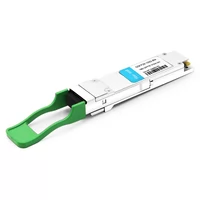 QSFP28-100G-IR4 100G QSFP28 IR4 1310nm (CWDM4) 2km LC SMF DDM Transceiver Module
$110.00
QSFP28-100G-IR4 100G QSFP28 IR4 1310nm (CWDM4) 2km LC SMF DDM Transceiver Module
$110.00
-
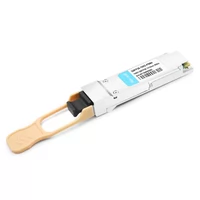 QSFP28-100G-PSM4 100G QSFP28 PSM4 1310nm 500m MTP/MPO SMF DDM Transceiver Module
$180.00
QSFP28-100G-PSM4 100G QSFP28 PSM4 1310nm 500m MTP/MPO SMF DDM Transceiver Module
$180.00
-
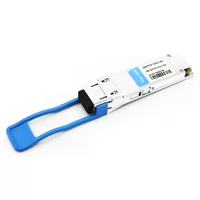 QSFP28-100G-LR4 100G QSFP28 LR4 1310nm (LAN WDM) 10km LC SMF DDM Transceiver Module
$285.00
QSFP28-100G-LR4 100G QSFP28 LR4 1310nm (LAN WDM) 10km LC SMF DDM Transceiver Module
$285.00
-
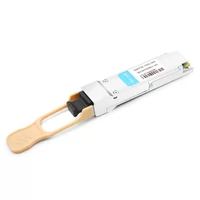 Cisco QSFP-100G-SR4-S Compatible 100G QSFP28 SR4 850nm 100m MTP/MPO MMF DDM Transceiver Module
$40.00
Cisco QSFP-100G-SR4-S Compatible 100G QSFP28 SR4 850nm 100m MTP/MPO MMF DDM Transceiver Module
$40.00
-
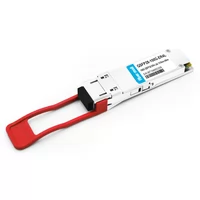 Cisco QSFP-100G-ER4L-S Compatible 100G QSFP28 ER4 Lite1310nm (LAN WDM) 40km with FEC,30km without FEC LC SMF DDM Transceiver Module
$800.00
Cisco QSFP-100G-ER4L-S Compatible 100G QSFP28 ER4 Lite1310nm (LAN WDM) 40km with FEC,30km without FEC LC SMF DDM Transceiver Module
$800.00
-
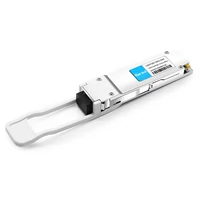 QSFP28-100G-ZR4 100G QSFP28 ZR4 1296-1309nm LWDM 80km LC SMF DDM Transceiver Module
$1500.00
QSFP28-100G-ZR4 100G QSFP28 ZR4 1296-1309nm LWDM 80km LC SMF DDM Transceiver Module
$1500.00
-
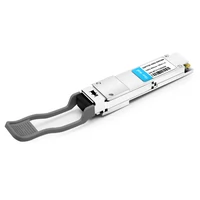 Arista Networks QSFP-100G-SWDM4 Compatible 100G QSFP28 SWDM4 850nm-940nm 100m LC MMF DDM Optical Transceiver
$300.00
Arista Networks QSFP-100G-SWDM4 Compatible 100G QSFP28 SWDM4 850nm-940nm 100m LC MMF DDM Optical Transceiver
$300.00
-
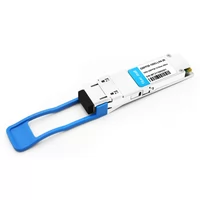 QSFP28-100G-LR4-20 100G QSFP28 LR4 1310nm LWDM4 20km LC SMF DDM Transceiver Module
$300.00
QSFP28-100G-LR4-20 100G QSFP28 LR4 1310nm LWDM4 20km LC SMF DDM Transceiver Module
$300.00
-
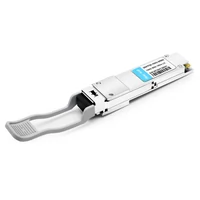 Cisco QSFP-40/100-SRBD Compatible Dual Rate 40G/100G QSFP28 BIDI 850nm & 900nm 100m LC MMF DDM Optical Transceiver
$449.00
Cisco QSFP-40/100-SRBD Compatible Dual Rate 40G/100G QSFP28 BIDI 850nm & 900nm 100m LC MMF DDM Optical Transceiver
$449.00
-
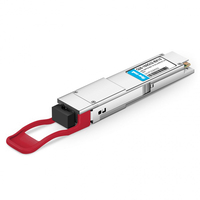 Q28-100G32-BX10 100G QSFP28 BIDI TX1331nm/RX1271nm PAM4 Single Lambda LC SMF 10km DDM Optical Transceiver Module
$500.00
Q28-100G32-BX10 100G QSFP28 BIDI TX1331nm/RX1271nm PAM4 Single Lambda LC SMF 10km DDM Optical Transceiver Module
$500.00
